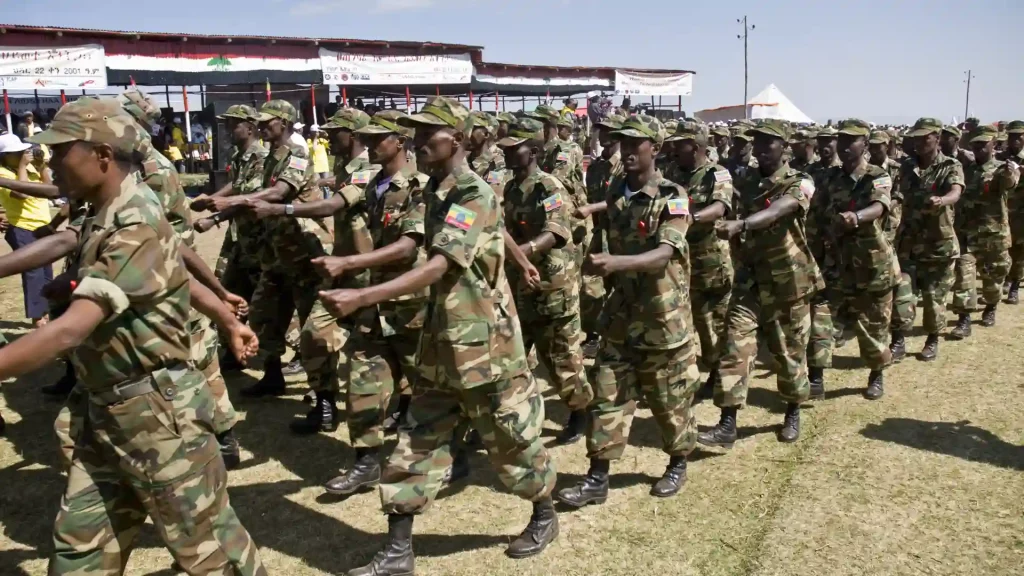Ethiopian civil war is a product of a political crisis and a humanitarian crisis
Ethiopia – the country that saw decades of bloodshed and war with some occasional episodes of stability – is heading for another period of stability as the Ethiopian government and the rebel Tigray People’s Liberation Front have agreed to put an end to hostilities. How long this ceasefire will last or how the two warring parties come to an agreement in terms of governance are questions that still remain unanswered.
What:
What Led to the Civil War?
The Ethiopian civil war is a product of a political crisis and a humanitarian crisis. Let’s go back to 1975. Until 1975, Ethiopia was a monarchical state. Derg, a socialist military junta, overthrew the last emperor in 1975 and started ruling the country. The problem is this military group formed an authoritarian government with oppressive control over the people of Ethiopia.
Ethiopian ethnic groups were not at all happy with the kind of centralized rule that Derg imposed on them. People from these ethnic groups – which included inhabitants of the Tigray region – formed an opposition. In the same year, militants (or revolutionaries, depending on which colored glass one is wearing) from Tigray formed Tigray People’s Liberation Front, which put up significant resistance against Derg.
After a bloody but failed counterinsurgency, TPLF and two other ethnic groups from Amhara and Oromia – and forces from Eritrea joined together to form the Ethiopian People’s Revolutionary Democratic Front (EPRDF) which finally ousted the Derg government. It is to be noted here that the coalition was led by TPLF.
“He who fights with monsters might take care lest he thereby becomes a monster.” – Nietzsche
Although the TPLF-led EPRDF government respected ethnic federalism, it was as authoritarian as the previous government. It cracked down on free speech, dissent and any kind of political opposition.
Slowly, friction between other Ethnic regions and the TPLF-led increased. In 2014, Oromia saw protests against the government when the latter tried to take over some portion of Oromia to expand Addis Ababa. Gradually, the protest spread to Amhara and other ethnic regions leading to the resignation of Prime Minister Hailemariam Desalegn.
Abiy Ahmed, the new Oromia-origin Prime Minister, made the eyes of violence-ravaged Ethiopians glimmer with hope as he released political prisoners, allowed free speech and enabled the press to function independently.
However, he had other plans. First, he removed Tigrayans from the government and merged the coalition into one single party, which he termed – the Prosperity Party. Once again, the federal structure of Ethiopia was in danger.
TPLF refused to join this newly formed party, fearing that it would lose its significance. Subsequently, Abiy Ahmed destroyed the national relevance of TPLF. It still remained powerful in Tigray.
In 2020, Tigray held regional elections despite the government’s order to postpone regional elections. The Abiy government termed the regional TPLF government unlawful. Amidst the growing power of the TPLF military, the verbal clashes between TPLF and the federal government turned into a full-blown, violent civil war.
Who
Who Is Responsible for the Death of Thousands of Civilians?
Both the federal government and the Tigray government are equally responsible for the death of ordinary Ethiopians who had nothing to do with the war. On the one hand, while cracking down on TPLF, the Abiy Ahmed government brutally massacred ordinary Tigrayans, with the Eritrean army committing the absolute worst cases of human rights abuse. And on the other hand, in 2021, Tigrayan forces resorted to the same kind of violence as they regained control of the Tigray capital, Mekele and forced its way to Amhara and Afar.
How
How Did the Warring Parties Come to an Agreement?
As the civil war turned into a humanitarian crisis, the United States, the U.N and the African Union put pressure on the warring parties to end the war. The U.S even restricted humanitarian aid to Ethiopia on account of the violence in Tigray. Finally, the two parties met over a peace talk last week in South Africa. This development comes after this peace talk.
“We have agreed to permanently silence the guns and end the two years of conflict in northern Ethiopia,” the two warring parties said in a joint statement. Signed by Getachew Reda of TPLF and Redwan Hussein of the Ethiopian government, the truce document laid down some actionable steps, which include disarming the field soldiers, allowing aid workers access to Tigray, rebuilding the region and allowing the justice system to punish the perpetrators of violence.
Some Questions Remain
The Truce, critics say, leads to more unanswered questions. The agreement does not say anything about the Eritrean forces in Tigray. How will the security of the people of Tigray be guaranteed after the Tigrayan force is disarmed? In what way did the ordinary people of Tigray who suffered unspeakable human rights abuse receive justice? Several questions remain unanswered.
Abiy Ahmed: An Unworthy Recipient of the Nobel Peace Prize
Abiy Ahmed received the Nobel Peace Prize for his reformist zeal as he became the prime minister. Little did the world know that the man was capable of such deviousness. According to CNN, an estimated 5.2 million people in Tigray need humanitarian assistance, and 3.8 million people are fighting death, injuries and sickness. The United Nations termed the food crisis in Tigray as a man-made famine.
Will the stability in Ethiopia last? Only time will tell.
